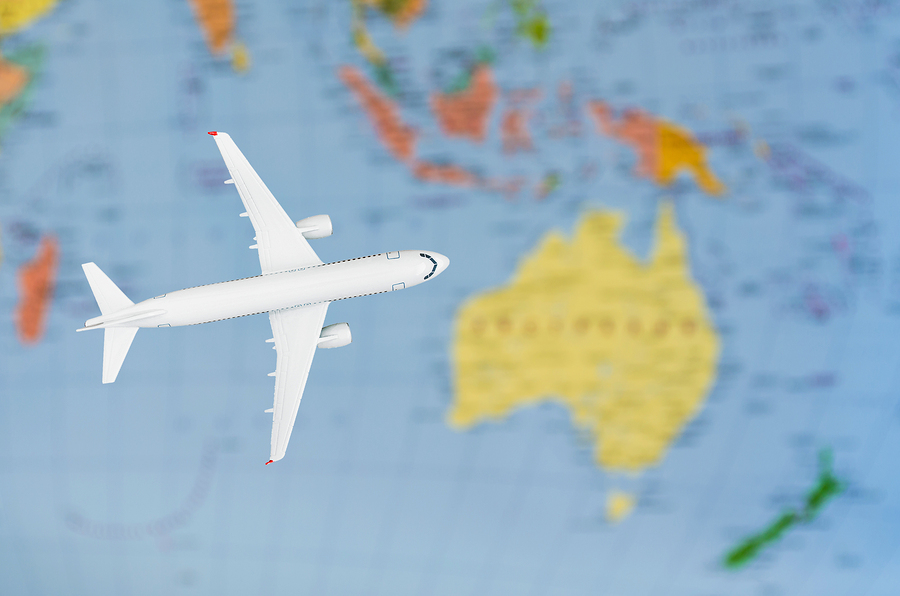A new milestone is emerging for the Kangaroo Route, which has come a long way since 1947 – four days and seven stops to link Australia with the United Kingdom. In the spring of 2017, Alan Joyce, CEO of the Australian Qantas Airways, launched a challenge to aircraft manufacturers: design an aircraft capable of flying for more than 20 hours to reach the United Kingdom non-stop. Before addressing the characteristics of this ambitious project, let us get a picture of the current situation.
Ever longer flights
Today, travelling the 16,700 kilometres that separate Sydney from London requires a stop in the Persian Gulf or South-East Asia. To meet the challenge laid down by Qantas would require an aircraft able to fly 20 hours and 20 minutes non-stop. This goal is being gradually approached – since 2017, 16 hour flights offered by Qantas connect Dallas with Sydney, and other flights of 16 hours and 23 minutes, offered by Qatar Airways, connect Doha and Auckland (14,535 km). In 2018, there will be a few more flight minutes gained with a 17-hour Perth-London flight. If the challenge is met, there will then be other direct flights that could be flown between Australia and North America or Latin America.
Costs are still high
With such non-stop flights, customers should expect an increase of 20% for tickets, mainly due to the increase in the transport coefficient (more fuel needed to transport the fuel consumed in the last few hours) and the difficulty of aircraft scheduling (after a 20-hour flight, the aircraft will not leave again for 20 hours). In addition, the professionals who will choose this type of flight in order to gain 3 to 4 flight hours on a Sydney to London route will not be interested in the Business Class of traditional flights. Facing this shortfall, some airlines will not hesitate to raise their prices for the average traveller. Next, maintenance costs may rise for aircraft that travel a long distance, there being greater wear. Finally, with far lower resale value than conventional aircraft (due to the market size), the company will have to bear an increased annual hull cost.
Ever more challenges and dilemmas
Faced with longer journeys, Airbus plans to offer more space for travellers. Thus, in 2018, the Singapore to New York flight on an A350 ULR (Ultra Long Range) aircraft will have 158 seats (68 in Business Class and 90 in Premium), compared to 253 seats in a conventional A350. However, aircraft manufacturers have a real dilemma: satisfying the comfort of passengers or designing a 300 seat aircraft to meet the explicit request by Qantas? Basically, the question at the centre of this challenge is how to fly longer. By improving the design of the wing? Increasing engine power? Reducing aircraft weight?… Airbus is opting for an increase in the number of fuel tanks: 17% more jet fuel for the special Airbus ULR version, the A350-900ULR, which will be able to fly 17,960 km. As for Boeing, it is working on the fuel tanks and reducing the aircraft’s weight, to release its B777 X in 2022.
To meet the challenge set by Alan Joyce to cross this “final frontier of global aviation”, aircraft manufacturers are redoubling their efforts and creativity. In four short years, Australia may be within reach of many countries by direct flight, but it will take another 10 to 15 years before it is within reach of all budgets.
